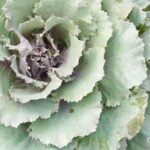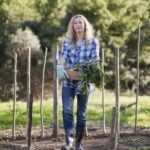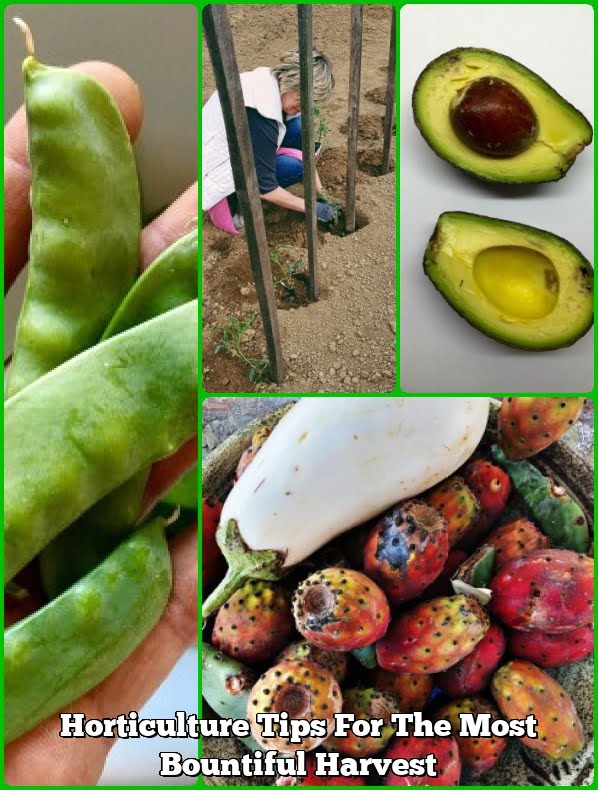Are you wondering, “can I get a good harvest from container vegetable gardening?” The answer is yes. Container gardening is a great way to grow fresh vegetables in a limited space, whether you have a small backyard, balcony, or patio.
In this article, we will explore the ins and outs of container vegetable gardening, from selecting the right containers and soil mix to managing pests and diseases. We will also provide tips for maximizing space and enjoying a bountiful harvest from your container garden.
Container vegetable gardening is an excellent option for those with limited outdoor space or poor soil quality. With the right knowledge and techniques, you can successfully grow a variety of vegetables in containers, allowing you to enjoy a plentiful harvest right at home. Whether you are new to gardening or simply looking for ways to make the most of your available space, container vegetable gardening is an accessible and rewarding option.
In the following sections, we will discuss the best vegetables for container gardening, how to select the right containers and soil mix, as well as essential tips for watering, fertilizing, and managing pests and diseases. By the end of this article, you will have all the information you need to start your own successful container vegetable garden and enjoy a fruitful harvest of fresh produce.
The Best Vegetables for Container Gardening
When it comes to container vegetable gardening, choosing the right vegetables to plant is crucial for a successful harvest. Some vegetables are better suited for growing in containers than others, and selecting the best ones can ensure that you can get a good harvest from your container garden.
Vegetable Options
There are plenty of vegetables that thrive in container gardens. Some of the best options include tomatoes, peppers, lettuce, carrots, radishes, and herbs such as basil and mint. These plants don’t require a lot of space to grow and produce bountiful harvests when grown in containers.
Considerations for Selecting Vegetables
When choosing which vegetables to grow in your container garden, consider the size of the mature plant and its root system. Compact or dwarf varieties of vegetables are ideal for containers as they take up less space while still producing plenty of fruits or veggies.
Seasonal Varieties
It’s important to also consider the climate and seasons when selecting vegetables for your container garden. Some vegetables thrive in cooler temperatures while others prefer warmer weather. Be sure to select varieties that are suitable for your specific climate and growing season.
By carefully selecting the best vegetables for your container garden, providing them with proper care and maintenance, and optimizing their growth conditions, you can get a good harvest from container vegetable gardening With the right choices and techniques, you can enjoy fresh home-grown produce regardless of limited space.
Selecting the Right Containers for Vegetable Gardening
When it comes to container vegetable gardening, selecting the right containers is crucial for the success of your garden. The right containers not only provide adequate space for root growth but also ensure proper drainage and aeration for your vegetables to thrive.
Material
The first consideration when selecting the right containers for your vegetable gardening is the material. While plastic, ceramic, and metal containers are popular choices, it’s important to consider their insulating properties. Plastic pots retain moisture better than terracotta, which tends to dry out more quickly. Metal containers can absorb heat, potentially harming plant roots in warm weather.
Size
The size of the container is another important factor to consider. Larger vegetables such as tomatoes and peppers will require bigger pots to accommodate their extensive root systems. On the other hand, smaller varieties like lettuce or herbs can thrive in smaller containers. It’s essential to match the size of your container with the specific needs of each vegetable you plan to grow.
Drainage
Proper drainage is crucial for container vegetable gardening. Without adequate drainage, excess water can accumulate at the bottom of your pots, leading to root rot and other problems. When selecting containers, be sure they have drainage holes or that you can easily add them yourself.
With careful consideration of the material, size, and drainage of your containers, you
Choosing the Right Soil Mix for Container Vegetable Gardening
When it comes to container vegetable gardening, choosing the right soil mix is crucial for the success of your plants. The soil in containers should provide good drainage and aeration, as well as retain enough moisture and nutrients to support healthy plant growth. Here are some tips for selecting the right soil mix for your container vegetables:
1. Use a high-quality potting mix: Look for a potting mix specifically formulated for container gardening. These mixes are typically lightweight, fast-draining, and enriched with nutrients to support plant growth. Avoid using garden soil in containers, as it can become compacted and hinder proper root development.
2. Consider adding organic matter: Adding compost or organic matter to your potting mix can help improve its structure and fertility. Organic matter also helps retain moisture and provides a steady supply of nutrients to your plants.
3. Choose the right pH level: Most vegetables thrive in slightly acidic soil with a pH range of 6.0 to 6.8. You can test the pH level of your potting mix using a simple soil testing kit, and make adjustments if necessary by adding lime to raise the pH or sulfur to lower it.
By choosing the right soil mix for your container vegetables, you can provide a healthy growing environment that supports robust plant growth and abundant harvests. With proper care and attention, you can get a good harvest from container vegetable gardening.
Tips for Watering and Fertilizing Container Vegetables
Container vegetable gardening is a great option for those with limited space or who want the convenience of having their vegetables close at hand. However, one common concern for those considering this method of gardening is whether they can get a good harvest from container vegetable gardening. The good news is that with the right techniques and care, it is definitely possible to achieve a bountiful harvest from container-grown vegetables.
In order to have a successful container vegetable garden, proper watering and fertilizing are crucial. It’s important to keep in mind that containers can dry out more quickly than traditional garden beds, so consistent watering is essential. Depending on the weather, vegetables grown in containers may need to be watered daily, especially during hot summer months. Using a drip irrigation system or self-watering containers can help ensure that your plants receive adequate moisture.
When it comes to fertilizing container vegetables, using a high-quality fertilizer specifically formulated for vegetables is recommended. Slow-release fertilizers are also beneficial as they provide a steady supply of nutrients over time. Additionally, organic fertilizers like compost and worm castings can be added to the soil mix to improve its nutrient content. It’s important not to over-fertilize as this can lead to excessive vegetative growth at the expense of fruit production.
Lastly, monitoring your plants for signs of nutrient deficiencies such as yellowing leaves or stunted growth is important. Adjusting your fertilizing regimen based on the needs of your plants can help ensure that they have everything they need to produce a good harvest. With proper watering and fertilizing, you can definitely get a good harvest from container vegetable gardening.
Managing Pests and Diseases in Container Gardening
Container vegetable gardening can be a great way to enjoy home-grown produce, but like any type of gardening, it comes with its own set of challenges. One of the biggest challenges for container gardeners is managing pests and diseases that can affect their plants.
To prevent pests and diseases from wreaking havoc in your container garden, there are several steps you can take. First, it’s important to choose disease-resistant varieties when selecting the vegetables you want to grow in your containers. This can help minimize the risk of disease affecting your plants. Additionally, practicing good garden hygiene by regularly removing dead or damaged leaves and other plant debris can help prevent the spread of disease.
When it comes to pests, keeping a close eye on your plants for signs of infestation is crucial. Common pests that may affect container vegetables include aphids, spider mites, and caterpillars. By regularly inspecting your plants and taking action at the first sign of an infestation, you can help minimize the damage these pests cause.
Finally, using organic pest control methods such as insecticidal soaps or neem oil can be effective at managing pest problems without resorting to harsh chemicals that could harm beneficial insects and other wildlife.
According to recent studies by the University of California-Davis, planting herbs such as basil or cilantro around your vegetable containers can also act as natural repellents to certain types of pests. This natural approach not only helps protect your plants but also creates a more diverse and sustainable environment in your container garden.
| Managing Pests | Prevention |
|---|---|
| Regularly inspect plants | Choose disease-resistant varieties |
| Practice good garden hygiene | Use organic pest control methods |
| Keep an eye out for signs of infestation | Consider planting natural repellents |
Maximizing Space for Container Vegetable Gardening
When it comes to container vegetable gardening, maximizing space is essential, especially if you have a limited area for planting. One effective way to maximize space is by utilizing vertical gardening techniques. This method involves growing plants upwards instead of outwards, allowing you to grow more vegetables in a smaller footprint. You can use trellises, stakes, or vertical planters to support vining plants such as tomatoes, cucumbers, and peas.
Another way to make the most of your container garden space is by interplanting different vegetables together. Interplanting involves growing different types of vegetables in the same container. For example, you can plant lettuce around the base of a tomato plant or grow radishes between pepper plants. This not only maximizes space but also helps in pest control and efficient use of nutrients in the soil.
Lastly, consider using hanging baskets or railing planters to add more growing space to your container garden. These containers can be hung on walls, fences, or balcony railings to free up precious floor space for more traditional containers.
| Maximizing Space Techniques | Description |
|---|---|
| Vertical gardening | Grow plants upwards with the use of trellises or stakes. |
| Interplanting | Planting different vegetables together in the same container. |
| Hanging baskets and railing planters | Add additional growing space by utilizing vertical surfaces. |
Harvesting and Enjoying the Fruits of Your Container Vegetable Garden
When it comes to container vegetable gardening, the ultimate goal is to enjoy a bountiful harvest of fresh, homegrown produce. Many people wonder, “Can I get a good harvest from container vegetable gardening?” The answer is a resounding yes. With the right techniques and attention to detail, container gardening can result in a productive and satisfying bounty of vegetables.
One of the most important factors in achieving a successful harvest from your container vegetable garden is proper maintenance and care throughout the growing season. This includes regular watering, providing adequate sunlight, and ensuring that your plants receive the necessary nutrients. Additionally, timely fertilization and vigilant pest management can contribute to a healthy and abundant yield.
Once your vegetables are ready for harvest, it’s important to handle them properly to ensure maximum freshness and flavor. Most vegetables are best when harvested at their peak ripeness, so paying close attention to their growth and development is crucial. Harvesting too early or too late can impact the taste and texture of your produce.
Finally, as you start harvesting your container garden’s vegetables, take time to savor the fruits of your labor. There’s nothing quite like enjoying a meal made with homegrown produce that you’ve nurtured from seed to table. Container vegetable gardening not only provides an opportunity for a good harvest but also promotes a deeper appreciation for where our food comes from and the effort it takes to grow it.
Conclusion and Encouragement for Successful Container Vegetable Gardening
In conclusion, container vegetable gardening can be a highly rewarding and successful endeavor if approached with the right knowledge and techniques. By following the tips and guidelines provided in this article, anyone can achieve a bountiful harvest from their container garden. The key is to choose the right vegetables for container gardening, select appropriate containers and soil mix, water and fertilize properly, manage pests and diseases, and make the most of limited space.
With the right amount of care, dedication, and attention to detail, anyone can experience the joy of harvesting fresh, homegrown vegetables from their own container garden. Whether you have a small balcony, a patio, or even just a window sill, you can still enjoy the satisfaction of growing your own produce. Container vegetable gardening provides an opportunity for everyone to connect with nature and enjoy the benefits of eating fresh, organic fruits and vegetables that they have grown themselves.
So, if you are considering starting a container vegetable garden or are already maintaining one, do not be discouraged by potential challenges. With proper planning and consistent care, you definitely can get a good harvest from container vegetable gardening.
The sense of accomplishment that comes from seeing your hard work pay off with a fruitful harvest is truly unparalleled. Embrace the journey and enjoy the process – soon enough you will be savoring delicious meals made with your very own bountiful harvest.
Frequently Asked Questions
Is Container Gardening Worth It?
Container gardening can be worth it for people with limited space, such as apartment dwellers or those with small yards. It offers the opportunity to grow plants in pots or other containers, providing flexibility and accessibility.
What Vegetables Can You Continuously Harvest?
Some vegetables that can be continuously harvested include lettuce, spinach, Swiss chard, and kale. These leafy greens can be picked as needed without needing to uproot the entire plant, making them a great choice for ongoing harvests.
What Is the Fastest Growing Vegetable to Harvest?
The fastest growing vegetable to harvest is typically radishes. These root vegetables can be ready to harvest in as little as three weeks after planting. This makes them a popular choice for gardeners looking for a quick turnaround on their crops.

If you’re looking to get into vegetable gardening, or are just looking for some tips on how to make your current garden better, then you’ve come to the right place! My name is Ethel and I have been gardening for years. In this blog, I’m going to share with you some of my best tips on how to create a successful vegetable garden.





